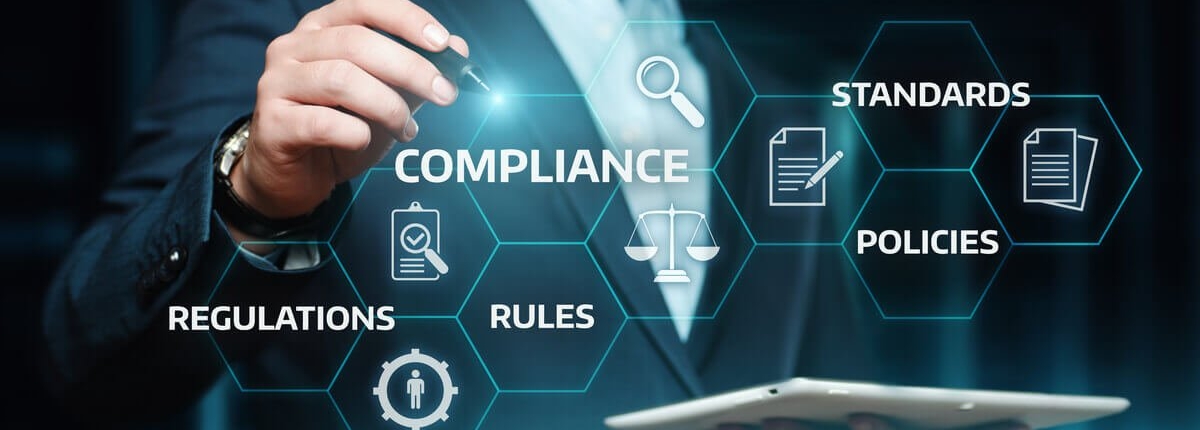IT Best Practices for Highly Regulated Industries
Highly regulated industries, including IT, are subject to many regulations impacting your business. IT regulations primarily focus on security and data protection and set a baseline of best practices for IT and security. However, they do not prescribe detailed solutions, meaning it is up to your business to identify the specifics.
Framework has helped highly regulated businesses with compliance and security for over 10 years. We recommend adopting the NIST Cybersecurity Framework to meet regulations and manage cybersecurity risks. This set of best practices is well-respected and covers everything you need to know about cybersecurity risk management. You can tailor it to fit your business needs and ensure that your IT practices match the unique challenges and risks you face. Following this framework can significantly improve your cybersecurity and help you meet regulations that apply to your business.
Why are we using the NIST Framework?
The NIST Cybersecurity Framework helps businesses prevent, detect, and respond to cyber-attacks and is a well-respected best practice in cybersecurity first released in 2014 and since updated multiple times to keep up with the changing cybersecurity landscape. It provides comprehensive approaches to:
- Managing risk
- Identifying, detecting, and protecting against cyber incidents
- Responding to cyber attacks
- Recovering from cyber attack
The NIST Cybersecurity Framework is widely used by organizations of all sizes and types, providing a common language for discussing cybersecurity risks and best practices that can be particularly useful for communicating with multiple stakeholders.
While no single framework can provide a complete cybersecurity solution, the NIST Cybersecurity Framework remains a valuable tool for organizations looking to improve their cybersecurity posture and reduce their risk of cyber incidents. The NIST Cybersecurity Framework is flexible enough to be adapted to a wide range of organizational contexts. However, organizations should supplement the NIST Cybersecurity Framework with additional measures and practices tailored to their needs and risks.
What are the 5 NIST Framework functions?
- Identify: Understand your organization’s systems, assets, data, and capabilities to manage cybersecurity risk.
- Asset Management: Identify and manage all hardware and software assets that support business operations.
- Business Environment: Understand the factors influencing risk management strategies, such as legal and regulatory requirements, stakeholder expectations, and business objectives.
- Governance: Establish policies and procedures to manage and monitor cybersecurity risks.
Action: Conduct a risk assessment to identify and prioritize cybersecurity risks to the organization.
- Protect: Develop and implement safeguards to ensure the delivery of critical infrastructure services.
- Access Control: Only authorized users can access critical systems and data.
- Awareness and Training: Ensure all employees know cybersecurity threats and best practices.
- Data Security: Implement processes to protect sensitive data, such as encryption and data loss prevention.
- Information Protection Processes and Procedures: Develop and implement processes and procedures to protect critical systems and data.
- Maintenance: Ensure that hardware and software are updated and patched regularly to prevent security vulnerabilities.
Action: Implement access controls, firewalls, and encryption to protect systems and data.
- Detect: Develop and implement activities to identify the occurrence of a cybersecurity
- Anomalies and Events: Implement processes to detect unusual or suspicious behavior on networks, systems, and applications.
- Security Continuous Monitoring: Implement ongoing monitoring and analysis of security controls and processes to identify potential threats.
Action: Deploy intrusion detection systems and security information and event management (SIEM) tools to monitor suspicious activities
- Respond: Develop and implement the appropriate activities to take action regarding a detected cybersecurity event.
- Response Planning: Develop and implement a plan to respond to cybersecurity incidents.
- Communications: Develop and implement processes for communicating about cybersecurity incidents with stakeholders.
- Analysis: Conduct thorough research on cybersecurity incidents to identify the cause and extent of the incident.
- Mitigation: Take action to contain and mitigate the impact of cybersecurity incidents.
Action: Develop incident response plans and procedures to manage and contain cyber incidents.
- Recover: Develop and implement the appropriate activities to maintain resilience plans and restore any capabilities or services impaired due to a cybersecurity event.
- Recovery Planning: Develop and implement a plan to restore critical systems and data in the event of a cybersecurity incident.
- Improvements: Review and improve incident response and recovery processes based on lessons learned from past incidents.
- Communications: Communicate with stakeholders about incident response and recovery efforts.
Action: Conduct critical data and systems backups and implement disaster recovery plans to restore systems and services.
Ensuring IT Security in Highly Regulated Industries
Maintaining IT security in highly regulated industries is crucial due to the higher data privacy and protection standards. Cybersecurity is emphasized as the key IT best practice for these industries, and the NIST Cybersecurity Framework provides a comprehensive guideline. Adopting this framework requires implementing IT best practices that comply with most IT-related regulations applicable to your company.
Implementing the NIST Cybersecurity Framework can be challenging, and we highly recommend seeking expert help. The Framework team is passionate about best practices and security and is always available to provide guidance and support. It’s also worth considering a managed security services provider for ongoing management.
Learn More About How Framework IT’s Unique Managed Services Pricing Model Incentivizes Clients to Adopt Data-Driven Best Practices, Such as Using Cloud Applications!


